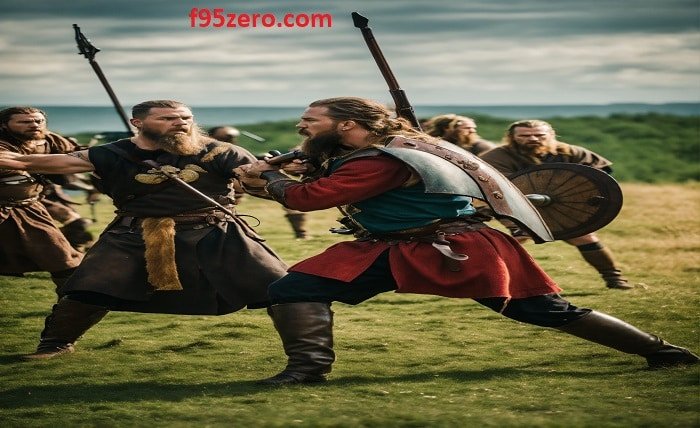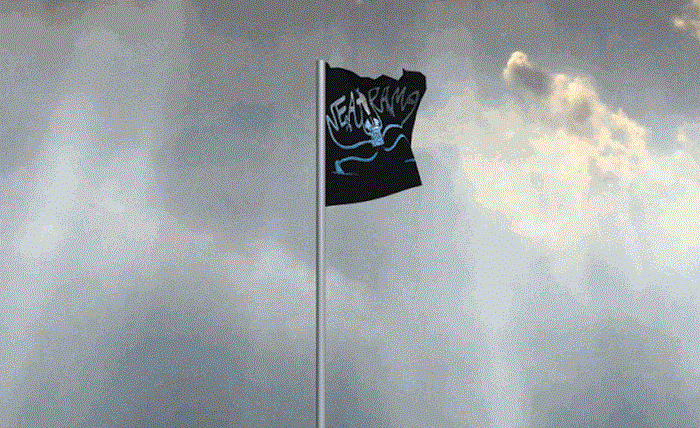Debunking the Myth: Did Vikings Wear Kilts?

The image of a fierce Viking warrior, clad in a plaid kilt and horned helmet, is ingrained in popular culture. But did these seafaring explorers from Scandinavia truly wear kilts? Let’s delve into the history and discover the truth behind this common misconception.
The Threads: The Kilt’s Origins
The modern kilt, as we know it, isn’t a garment with Viking roots. It emerged in its recognizable form around the 16th century in the Scottish Highlands. The kilt evolved from the “great kilt,” a large, pleated garment worn by both men and women in Scotland and Ireland. This garment pre-dates the Viking Age, which spanned roughly from the 8th to the 11th centuries.
Viking Attire: Practicality Reigns Supreme
So, what did Vikings actually wear? Instead of kilts, their clothing prioritized practicality and functionality for their harsh climates and active lifestyles. Their attire typically consisted of:
Tunics: Made from wool or linen, these knee-length or longer garments served as the base layer.
Trousers: Loose-fitting trousers made from wool or animal hides provided warmth and protection for the legs.
Braies: These undergarments resembled modern boxer shorts and offered additional warmth and comfort.
Cloaks: Made from thick wool or animal skins, cloaks provided warmth and protection from the elements.
Glimpse from the Past: Archaeological Evidence
Archaeological finds like bog bodies and grave goods shed light on Viking clothing. These discoveries depict trousers, tunics, and cloaks, but no evidence of kilts exists. Additionally, historical accounts and sagas, though not completely reliable, do not mention garments resembling kilts.
The Fusion of Cultures: Vikings and Scotland
While Vikings didn’t wear kilts, they did interact with Celtic cultures during their raids and settlements. Some speculate that these interactions might have influenced later kilt development in Scotland. However, the historical evidence doesn’t directly link Viking attire to the origin of the kilt.
Beyond Historical Accuracy: The Allure of the Viking Kilt
Despite the historical inaccuracy, the image of the Viking in a kilt persists in popular culture. This can be attributed to several factors:
Romanticism and artistic license: Artists and storytellers often depict historical figures in ways that enhance their dramatic appeal, leading to inaccuracies.
Confusion with other cultures: Viking culture sometimes gets conflated with Celtic cultures, where kilts did originate.
Marketing and commercialization: The image of the Viking in a kilt has been used for marketing purposes, further solidifying the misconception.
Conclusion
Understanding the true nature of Viking attire allows us to appreciate their unique culture and the development of garments like the kilt in their proper historical context. While Vikings weren’t kilt-clad warriors, their legacy continues to inspire and intrigue us today. Remember, historical accuracy enriches our understanding of the past, allowing us to separate myth from reality and appreciate the fascinating diversity of human cultures.
FAQ
1. Did Vikings wear anything similar to kilts?
While not an exact match, some wore knee-length tunics. However, these lacked the pleating and construction of a true kilt.
2. Why do people think Vikings wore kilts?
A combination of artistic license, cultural confusion, and marketing contributed to this misconception.
3. What resources can I use to learn more about Viking clothing?
Museums, historical societies, and reliable online resources like academic journals and articles from trusted historical institutions can offer accurate information.
4. Should I avoid depictions of Vikings in kilts altogether?
While historically inaccurate, fictional portrayals can still be enjoyed as long as you’re aware of the discrepancy. Consider them imaginative interpretations rather than factual representations.
5. Where can I find accurate Viking reenactments and educational resources?
Look for groups adhering to historical accuracy through research and authentic clothing reproduction. Educational institutions and museums often offer reliable information and events.




